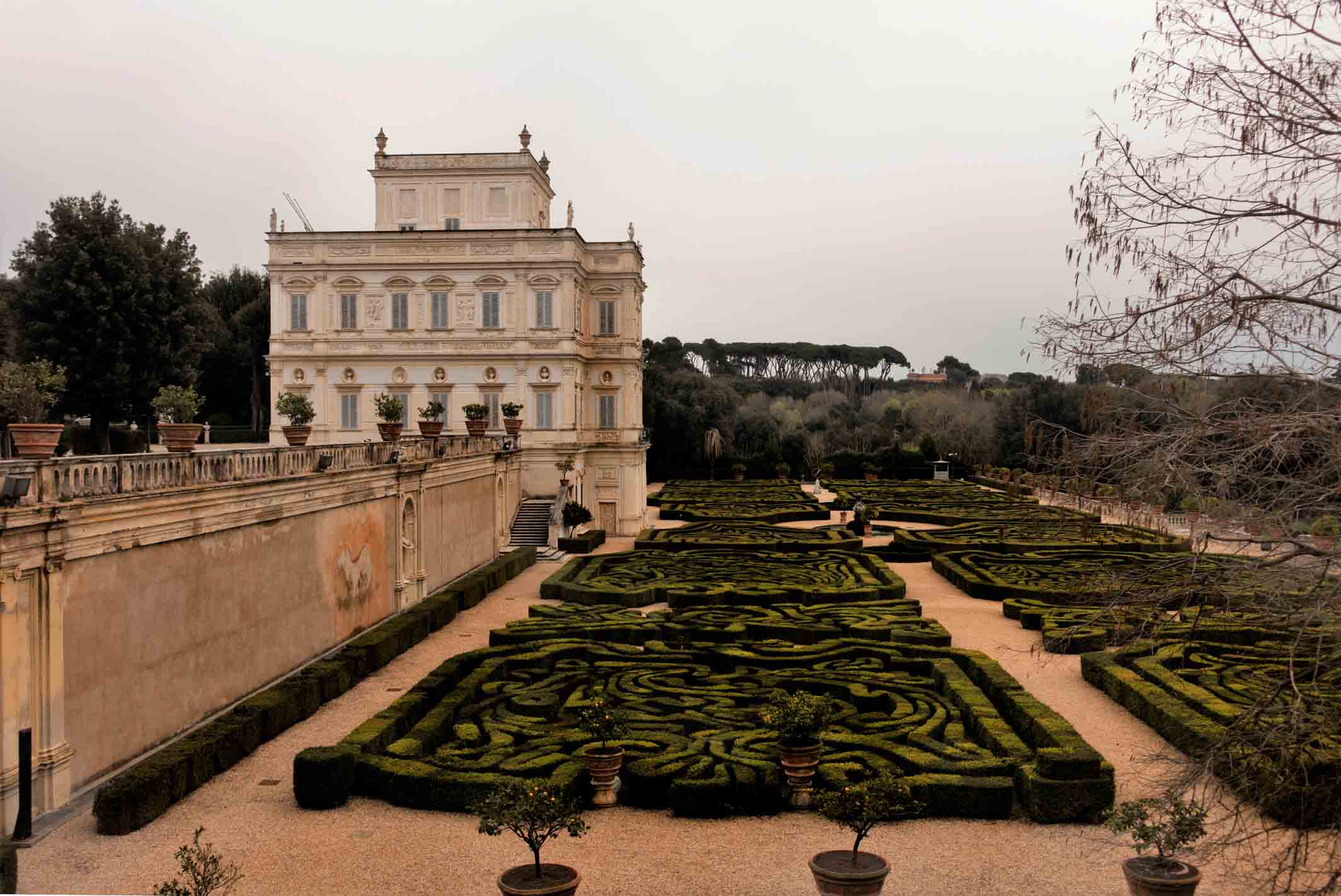
BUDOWLE & OBIEKTY Residential and representative buildings
Casino di Villa Doria Pamphilj – a symbol of social status and a tool of international rivalries

The full name of this suburban residence is Casino di Villa Doria Pamphilj, and the word villa here is understood as a park, in which the casino, meaning villa is located. Other names that we can come across are Casino del Bel Respiro, Villa Algardi, or Casino dell’Algardi (from the surname of its builder).
The work on the building and its decorations was taken up by artists protected by the Pamphilj family – Girolamo Rainaldi, Alessandro Algardi and Francesco Grimaldi. The park surrounding the villa was designed as a great work of art with fancy trees and bushes adding to its splendor. The estate was also to be an evidence of the artistic aspirations of the pope and his family. After Camillo resigned the cardinalate and married Olimpia the Princess of Rossano, it was in turn supposed to be a symbol of the refined tastes of the married couple. Works of antique art were collected here, enriched by contemporary bas-reliefs and wall paintings showing various parts of landscape (Grimaldi). Works of art were shown inside the building, which served solely representative and collection purposes, as well as on its façade and in the park itself.

The hexagon shaped building itself, is situated on a high base and is surrounded by a garden patterning it after antique villas. This pearl of architecture has niches with statues, busts and bas-reliefs in the main garden façade. The man behind the idea of this conservation and architectural complex was – as mentioned before – the architect and sculptor Alessandro Algardi and it was in him that the sponsor found an ideal creator of his residence, which was supposed to put to shame similar Roman residences located in broad park complexes – of the Medici family on Pincian Hill (Villa Medici) and the even grander Villa Borghese – the significant work of Cardinal Scipione Borghese from the Borghese family.
The casino belonged to the Pamphilj family until 1760, when it was taken over by the Genoa-based Doria family. At that time most of the collections were moved to the palace at via del Corso (Palazzo Doria Pamhilj). Presently the building (since 1957) is owned by the Italian state and is used for representative purposes.
Some parts of the casino can be visited after prior reservation. Generally this facility is not open to the public.Może zainteresuje Cię również
Camillo Francesco Maria Pamphilj (1622–1666) – an arthritis-filled expiation of the papal nephew
Zgodnie z art. 13 ust. 1 i ust. 2 rozporządzenia Parlamentu Europejskiego i Rady (UE) 2016/679 z 27 kwietnia 2016 r. w sprawie ochrony osób fizycznych w związku z przetwarzaniem danych osobowych i w sprawie swobodnego przepływu takich danych oraz uchylenia dyrektywy 95/46/WE (RODO), informujemy, że Administratorem Pani/Pana danych osobowych jest firma: Econ-sk GmbH, Billbrookdeich 103, 22113 Hamburg, Niemcy
Przetwarzanie Pani/Pana danych osobowych będzie się odbywać na podstawie art. 6 RODO i w celu marketingowym Administrator powołuje się na prawnie uzasadniony interes, którym jest zbieranie danych statystycznych i analizowanie ruchu na stronie internetowej. Podanie danych osobowych na stronie internetowej http://roma-nonpertutti.com/ jest dobrowolne.